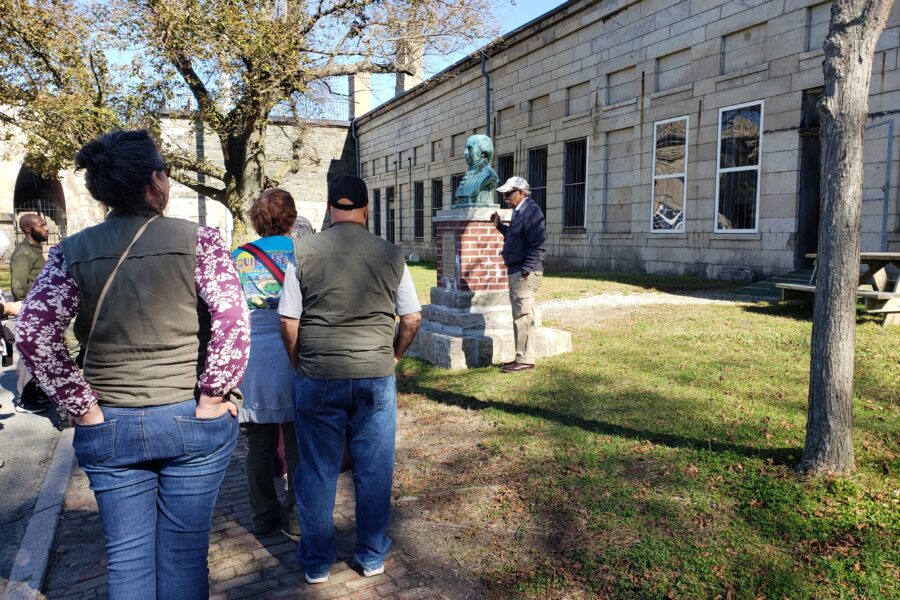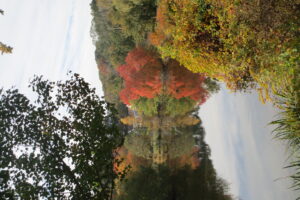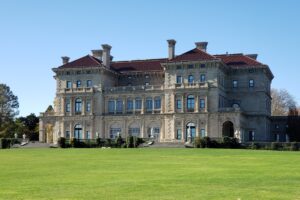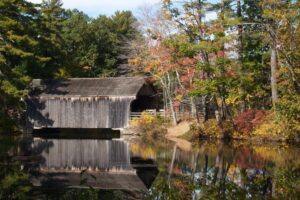When the weather forecast predicts there will be a day of sun, amidst all the clouds and rain that have invaded October, we set our sites on one of our many planned day trips. Today we drive southwest toward Newport. While Michael follows his nose, I peruse information about Newport on my phone, looking for the must sees during our brief time there.
Google Maps takes us to the destination where today’s adventure will commence. Ocean Drive. The beginning of this drive is at the end of Thames Street which is also on the must see list of places to visit.



Fort Adams
Michael and I are on Ocean Drive for mere seconds when we see a sign pointing to Fort Adams. When I think of Newport, the last thing I ever think of is war and forts, but it must be here for a reason. We look at each other and agree we might as well see what it is all about.

Michael purchases two tickets for a guided tour—apparently the only way to see the fort. We while away the thirty minutes before the tour begins by sitting on a bench by the bay. The morning is cool and breezy; the sun performs its ritual duty of warming our world. I admire the beautiful blue of the deep harbor of Newport while Micheal admires the seagoing vessels. Sailing ships. Barges. Commercial fishing boats. The harbor patrol.
The harbor feeds into Narraganset Bay, which is the reason, we discover, that a fort stands on this very spot.





The Tour
Our guide is a crusty, old, no-nonsense warrior himself. He is surprisingly entertaining and very informative as he lays out fact after fact about this point of land and its uses throughout the birth and life of our nation.



Fort Adam’s is huge! That is the first notable feature. So expansive that three forts of the same period could fit inside its walled parade grounds with room left over.

The French Connection
Then there is the French connection. My ears perk up when the words United States, military, fort, and Napolean are mentioned in the same breath.
“What did we know about building forts that would defeat the enemy?” Our guide begins, “So we ask this guy, a general who fought with Napolean for help.” Pointing to a picture he elaborates.
The French connection is filled with notable names of engineers, beginning with the name Vauban whose book on fortifications inspired the original defenses on this tiny peninsula in the early 1700s, and ends in 1816 with the man who had the very un-French sounding name of Simon Bernard. We learn that Bernard was very skilled in the art of war and the design of fortifications.

Changing allegiance from Napoleon after his first defeat, Bernard threw his support to the Bourbons and was promoted by Louis XVIII to general de brigade and made a Knight of St. Louis. He switched his support back to Napoleon when Bonaparte returned from Elba. After Napoleon’s second defeat Bernard was banished from France and emigrated to the United States. Entering the US Army, he was accepted as an assistant engineer with the rank and pay of a brigadier-general of engineers.
Of course there is more to the story of Baron Simon Bernard, who designed this fort where we stand today, and his ties to Napoleon. He not only made his mark here, but also at many other fortifications along the East Coast.
The rest of the story – a military point of view – of Simon Bernard.
Learning the Art of War

We walk in and out of time savaged rooms in this lengthy expanse of barracks. Eventually climbing up many downward-sloping steps, we arrive at the top of the wall where hundreds of cannons were mounted so long ago. We stand and stare at the sweeping view of the harbor and Narraganset Bay. Imagining. Failing in our imagination. The day is too beautiful. The atmosphere too peaceful, to hear a cannon roar.


Turning, we descend to the parade grounds once again. After several more stops and several more lectures, we find ourselves in a dark tunnel with off shoots to shorter, darker, tunnels. Being 6′ tall, Michael must double over to enter. His back screams NO!
These tiny tunnels are accurate listening devices. An enemy who is above ground, or an enemy trying to tunnel below the fort has no hope of a sneak attack. Bernard thought of everything in the garrison’s design, which is bordered by the sea on three points and land on one. The land side, being the most vulnerable part of any fortification.




Our tour ends and I tell our guide how much I appreciate the quantity and quality of the information he gave to all of us. He looks at me smiling and tells me, “Well, I do love my fort.”

















Leave a Reply
Your email is safe with us.